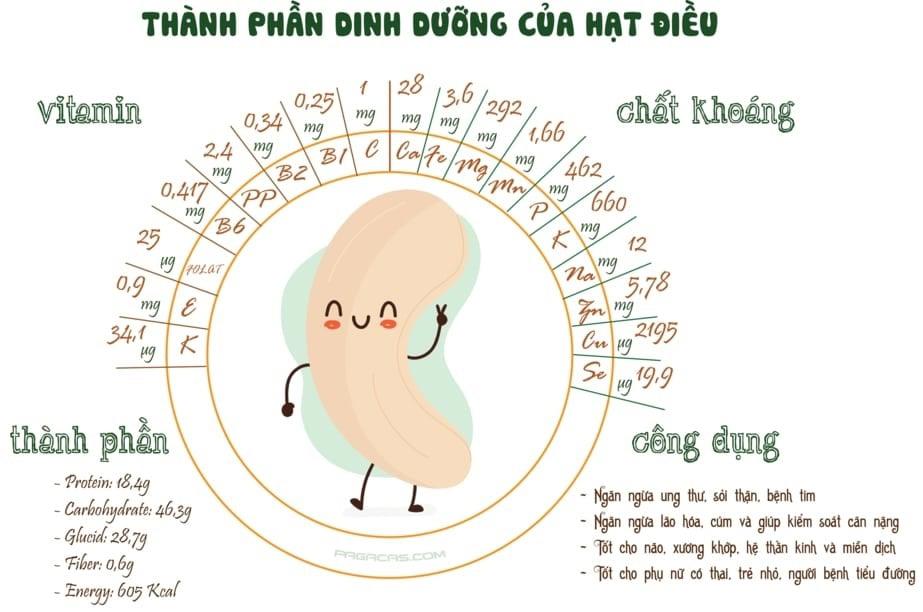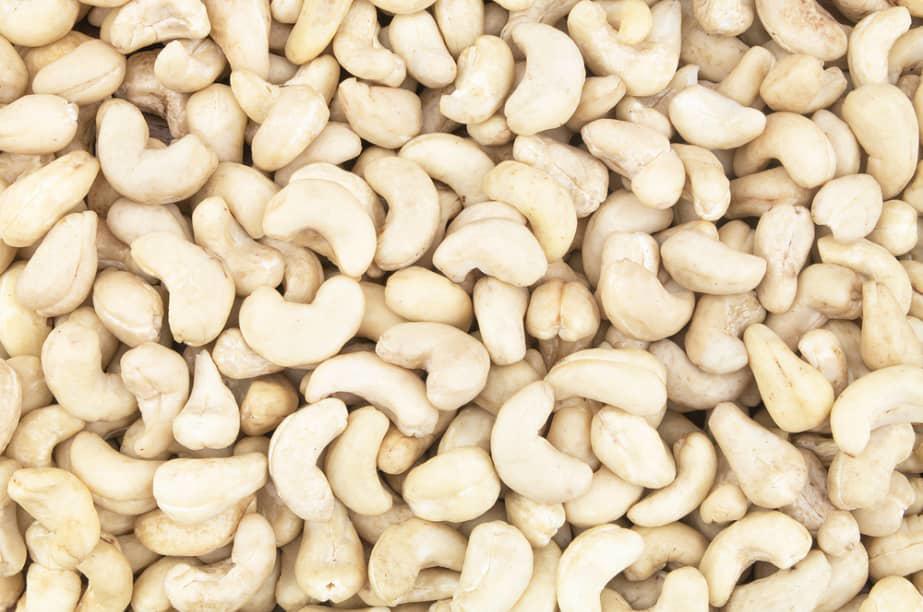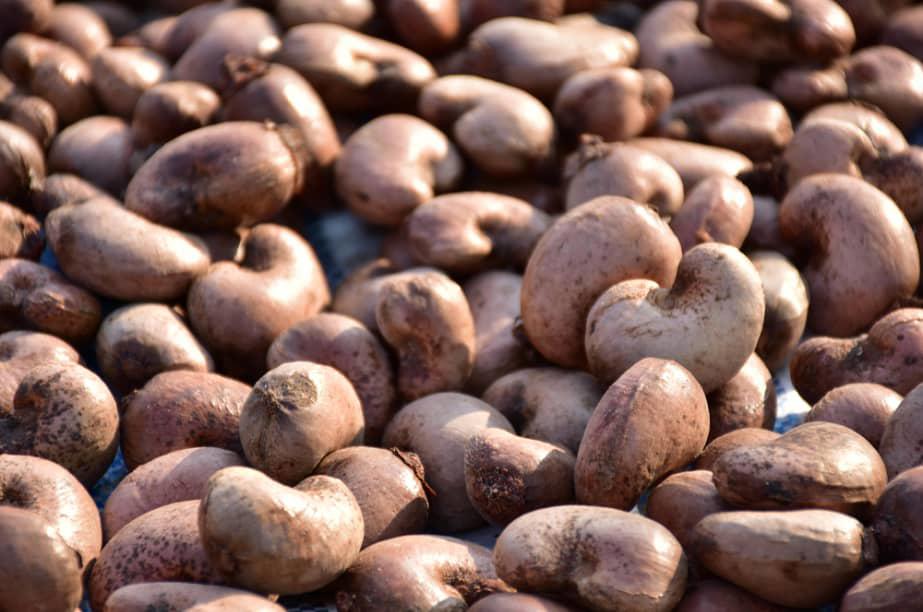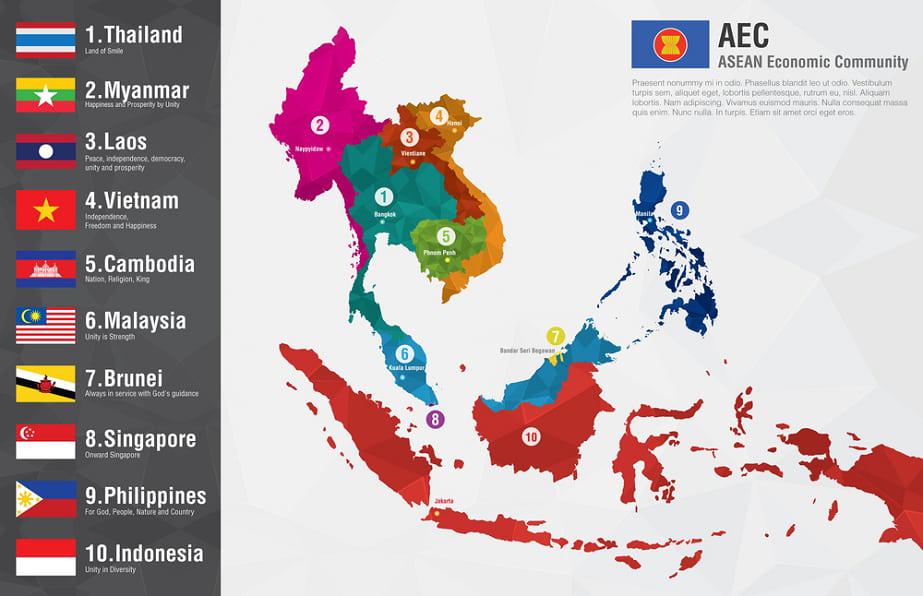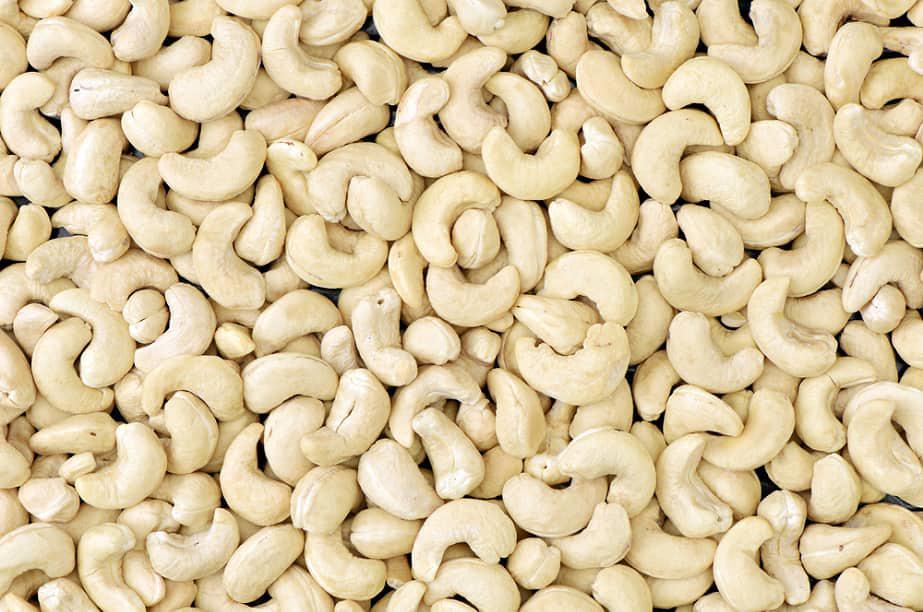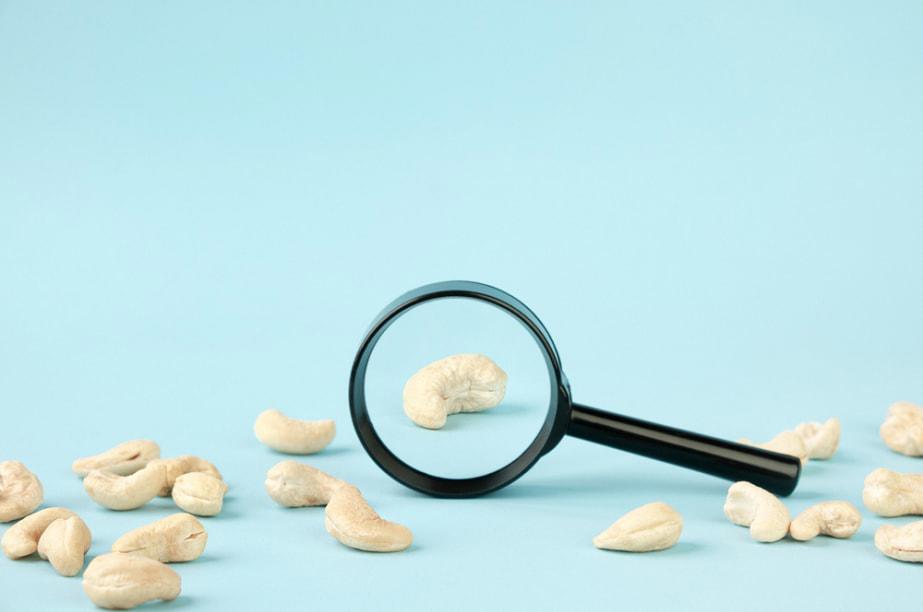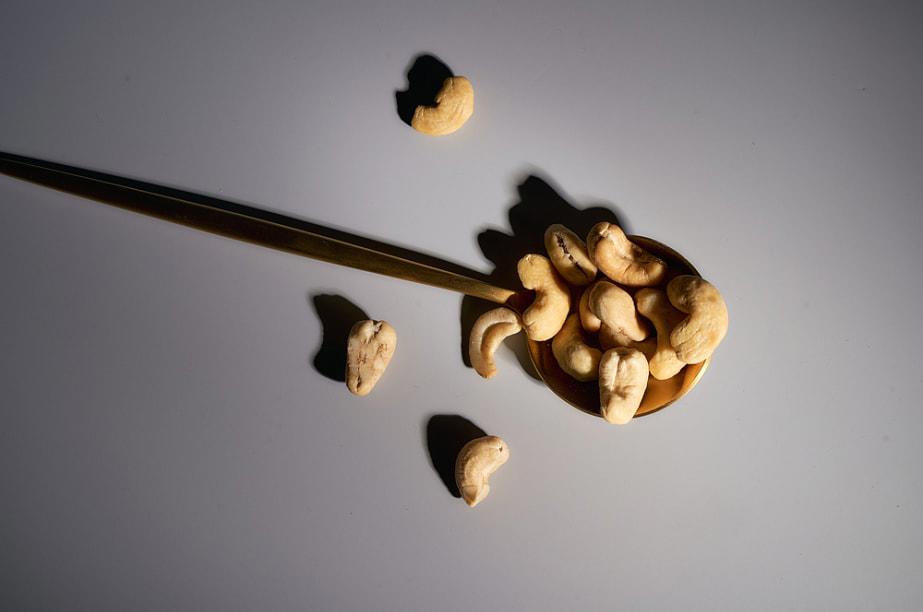Specifications for Cashew Kernels
AFI Nut & Agricultural Products Section
Below is a summary of the 2016 AFI standard, to view the full article and details, please download here:
- AFI Cashew Standard 2016 - Vietnamese version
- AFI Cashew Standard 2016 - English version
- See a summary of cashew standards here.
General requirements
Each shipment to the U.S. shall be of good quality and be stored in accordance with good commercial practice. No live infestation is permitted.
The cashews shall be packed in new, clean, dry, leak-proof, lead-free containers with an airtight (hermetic) seal and without internal paper lines. Packaging shall be of sufficient strength to assure the integrity of the product during normal shipment and storage.
The outer container shall be constructed of a new cardboard, free of infestation and visual mold and sealed without staples, unless otherwise specified by the end user.
Requirements for cartons:
- Cartons must be a minimum of 200-pound test, 32 ECT.
- Only food-grade CO2 is permitted.
- All cartons shall be clearly marked with the following:
- Name of the product and trade name or brand name, if any.
- Name and address of producer or packer.
- Grade.
- Net weight.
- Country of Origin.
- Buyer’s name or marks.
- Destination.
- Other marks agreed to by buyer and seller.
In the United States, the only pesticides approved for use on cashews and the residue limits for those pesticides are as follows: Flutriafol - .02 ppm; Phosphine - .1 ppm.
Bill of Lading must list the number of cartons, source of origin, and the marks that are on the cartons.
All shipments shall be inspected prior to loading and shall be carried on conveyances suitable for transporting food products in good condition, i.e. free of odors, insect or mold damage, rodent activity, and all other foreign materials.
The moisture level of the cashews shall be 3%-5%, as determined by the AOAC reference method.
If a roast test is required in a contract, it should be conducted in accordance with Appendix II. (Scrapes)
Cashew kernels shall be free of hard or sharp foreign objects and hair.
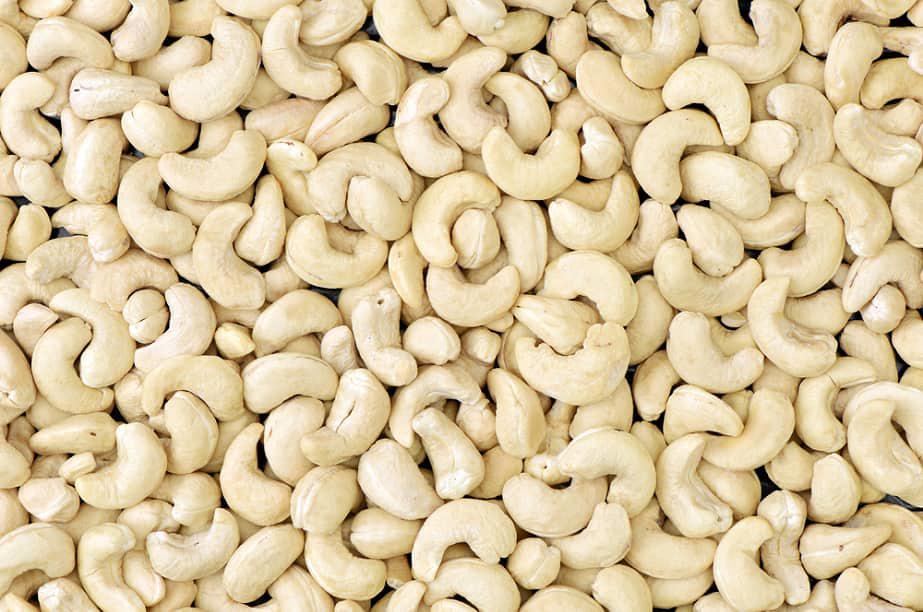
Quality and Grading
Cashew kernels are classified as:
First quality fancy cashew kernels have a uniform color which may be white, light yellow or pale ivory.
Second quality scorched cashew kernels may be yellow, light brown, light ivory, light ash-gray or deep ivory.
Third quality special scorched cashew kernels may be deep yellow, brown, amber, and light to deep blue. They may be slightly shriveled, light-brown speckled, blemished or otherwise discolored.
Fourth quality cashew kernels would qualify as First or Second Quality, except that they have pitted spots.
Lightly Blemished Wholes (LBW) cashew kernels may be light brown, light ivory, light ash-gray or deep ivory. Kernels may show light brown speckles or blemishes on the surface, provided that not more than 40 percent of the kernels are affected.
Blemished Wholes (BW) and Dessert
Lightly Blemished Pieces (LP) cashew pieces may be light brown, light ivory, light ash-gray or deep ivory. Pieces may show light brown speckles or blemishes on the surface, provided that not more than 20 percent of the pieces are affected.
Sizing
Sizing is compulsory in first quality/fancy cashew kernels but is optional for other whole grades.
Size Tolerance: Whole kernels of a lower size grade shall not exceed 10% by weight.
The quantity of broken kernels or pieces in whole kernels shall not exceed 10% by weight.
The quantity of pieces present in butts and splits shall not exceed 10% by weight.
|
Size Designation |
Count per |
|
|
Kilo |
Pound |
|
|
180 (or SLW) |
266-395 |
140-180 |
|
210 (or LW) |
395-465 |
180-210 |
|
240 |
485-530 |
220-240 |
|
320 |
660-706 |
300-320 |
|
450 |
880-990 |
400-450 |
Whole (W)
A cashew kernel is classified as whole if it has the characteristic shape of a cashew kernel and not more than 1/8th of the kernel has been broken off. This grade may also be designated as W. An excessive number of 7/8th kernels or splits that detract from the appearance of the sampled lot may be the basis for claim.
Butts (B)
Kernels which have been broken crosswise are less than 7/8 but not less than 3/8 of a whole kernel and the cotyledons are still naturally attached. This grade may also be designated as B.
Splits (S)
One half of a cashew kernel that has been split lengthwise, provided not more than 1/8 of this cotyledon has been broken off. This grade may also be designated as S.
Pieces – See Below Table
Some standard tables for raw cashew kernels
Table 1. Tolerances for Defects and Damage in Raw Cashew Kernels
|
|
Dessert |
Third Quality Special Scorched |
Second Quality Scorched |
First Quality |
|
Serious Damage |
||||
|
Insect Damage |
1.0% |
1.0% |
1.0% |
0.5% |
|
Mold rancidity, decay, adhering matter |
1.0% |
1.0% |
1.0% |
0.5% |
|
Foreign Matter (1) |
0.01% |
0.01% |
0.01% |
0.01% |
|
Maximum Serious Damage |
2.0% |
2.0% |
2.0% |
1.0% |
|
Defects |
|
|||
|
Second Quality Scorched |
B |
B |
B |
5.0% |
|
Third Quality Special Scorched |
B |
B |
5.0% |
1.5% |
|
Lightly Blemished Pieces |
(*20% Light Brown Speckled) |
5.0% |
1.5% |
|
|
Lightly Blemished Wholes |
(*40% Light Brown Speckled) |
5.0% |
1.5% |
|
|
Blemished Wholes |
(*60% Brown Speckled) |
2.5% |
0.5% |
|
|
Dessert |
B (2) |
7.5% |
2.5% |
0.5% |
|
Superficial Damage (scrapes) |
B |
5.0% |
2.0% |
1.0% |
|
Adhering Testa/Seriously Damaged (3) |
3.0%/1.5% |
3.0%/1.5% |
3.0%/1.5% |
3.0%/1.5% |
|
Black Speckled Kernels |
0.05% |
|
|
|
|
Maximum Defect Level |
(*Maximum speckled for LBW and BW) |
14.0% |
11.0% |
8.0% |
(1) The tolerance for foreign matter is in addition to the tolerance for maximum serious damage.
(2) Dessert quality is the lowest grade but the defects cannot be so severe that the product is not merchantable. A delivery is acceptable provided it is
equal or better than the approved pre-shipment sample. Two sealed pre-shipment samples are to be sent to the buyer for approval, one of which shall
remain sealed for possible use in settling a dispute on quality at arbitration.
(3) Maximum of 3% by weight for testa greater than 2mm in aggregate, but not more than 1.5% seriously damaged by adhering testa.
Table 2. Cashew Pieces - Size Descriptions
|
Grade |
Name |
Passing through Sieve Number |
Retained on Sieve Number |
|
LWP, SP, SPS, LP, DP, P1, P2, P3 |
large pieces |
Tyler No. 2.5 (USA No. 5/16) NMT 50% |
Tyler No. 0.25 (USA No. 1/4) opening = 6.3 mm |
|
SWP, SSP, DSP, SP1, SP2, SP3 |
small pieces |
Tyler No. 0.25 (USA No. 1/4) opening = 6.3 mm |
Tyler No. 7 (USA No. 7) opening = 2.80 mm |
|
CHIPS, SSP1, SSP2, SSP3 |
chips or special small pieces |
Tyler No. 7 (USA No. 7) opening = 2.80 mm |
Tyler No. 8 (USA No. 8) opening = 2.36 mm |
|
BB or G1, G2, G3 |
grains, granules, or baby bits |
Tyler No. 8 (USA No. 8) opening = 2.36 mm |
Tyler No. 10 (USA No. 12) opening = 1.70 mm |
|
X |
fine grains |
Tyler No. 10 (USA No. 12) opening = 1.70 mm |
Tyler No. 14 (USA No. 16) opening = 1.18 mm |
|
FE |
fines |
Tyler No. 14 (USA No. 16) opening = 1.18 |
N/A |
|
P1M, P2M, P3M |
mixed pieces |
Pass through 6.3 mm Sieve |
Retained on a 4.75 mm Sieve |
|
TOLERANCE For lower grade pieces - 5.0% with not more than 1.0% from the next lower grade size. Further, the grades SWP/SP1, SSP1/Chips, G1/BB, and X must also be reasonably uniform in appearance, that is, with not more than 5.0% from the grade size above.
NB. The grade SSP as used above is a Brazilian grade designation for special small pieces, not to be confused with the Indian grade SSP, “small scorched pieces.” |
|||





